Open House
A playfully grand Back Bay townhouse by Catherine Truman is full of treasures hidden in plain view. —By Alyssa Giacobbe
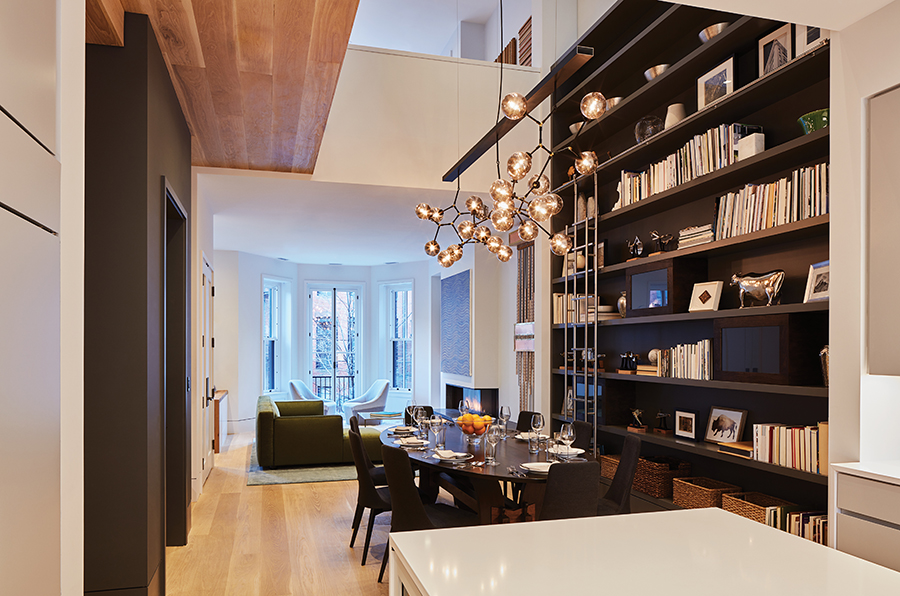
Extending to the roof, a narrow light well illuminates the double-height dining space. / Photograph by Jane Messinger
Cambridge architect Catherine Truman has built a career working at the intersection of historical settings and modern design. And that intersection, she says, was the premise for this Back Bay project—a gut renovation of a 19th-century townhouse—“from the word go.”
Truman’s clients, a couple with three young children, had bought the five-story, 6,200-square-foot building with dreams of transformation, intending to restore the multi-unit apartment building to its original form: a single-family home. They envisioned an open, light, and contemporary space—practical yet informal—that would encourage family time through tech-forward, multiuse communal areas. And while the couple value city living—both commute to work by foot or bike—they also love nature, so outdoor space and natural ventilation were high on their wish list. Most of all, though, they wanted to create a home that was fun and functional for all ages, a welcoming place not only for their kids (and their kids’ friends), but also for their aging parents. “They have a great approach to life and are very fun people,” Truman says. “One of the first things they told me was they wanted parking for 10 bikes and five paddleboards. Also, a karaoke room. I knew I wanted to do the project from the very start.”
It was not, however, a minor project. Reconfiguring the townhouse required significant demolition and construction. Everything about the building would have to be new, with the exception of the party walls and the brick exterior. Cambridge-based contractor Marc Truant & Associates oversaw the nearly two-year process, removing and reconstructing the interior walls one floor at a time. The work even extended to the basement, where the team satisfied one of the clients’ environmental must-haves: the creation of flood panels to acknowledge the likelihood of a Hurricane Sandy–type event. To that end, Truman selected materials that could withstand—or help mitigate—rising water levels, while also relocating some of the mechanical room to the third floor to prevent complications in the event of flooding.
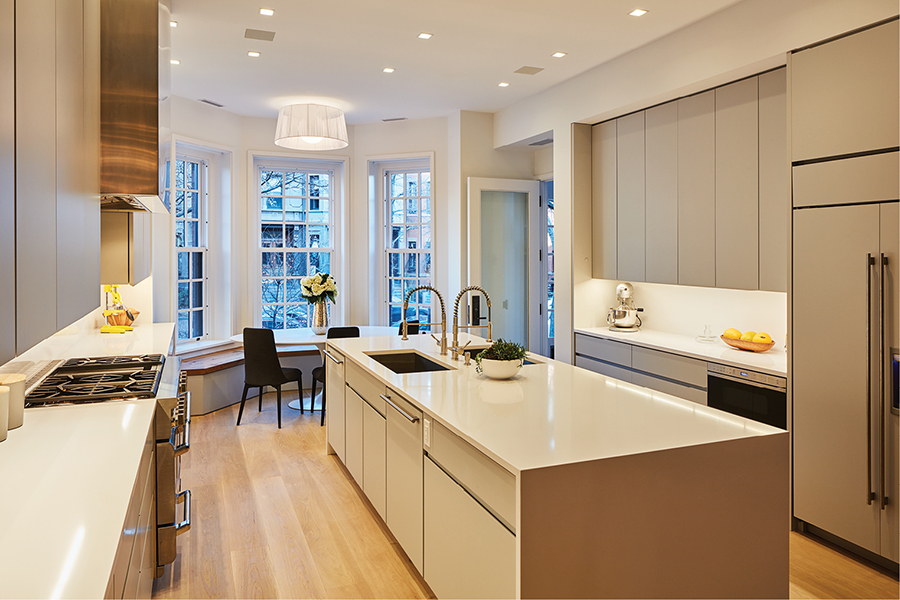
The minimalist kitchen features integral cabinet pulls and a salvaged-oak bench that opens for additional storage. / Photograph by Jane Messinger

The second-floor hallway offers views of the kitchen and the dining room below. / Photograph by Jane Messinger
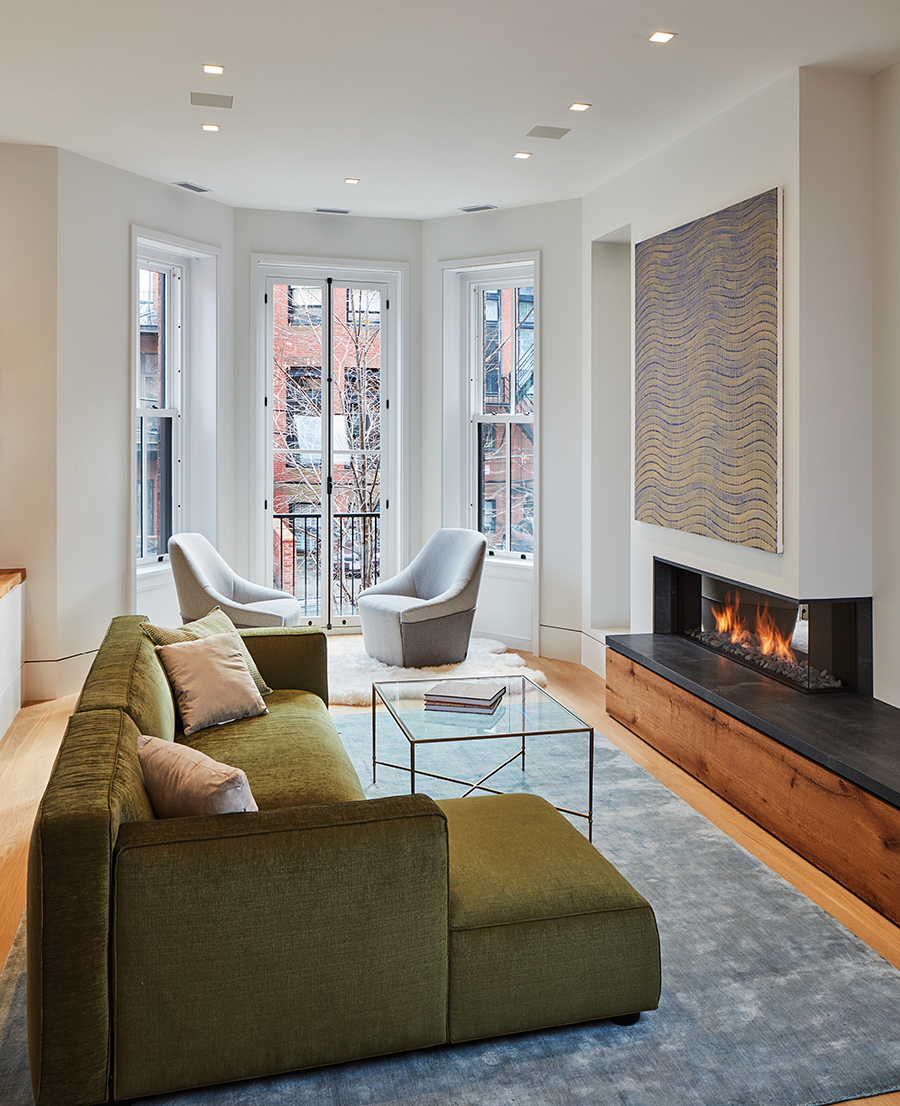
Contractors lowered the windows in the first-floor family room to allow for French doors and a Juliet balcony. The painting above the fireplace conceals a recessed TV. / Photograph by Jane Messinger
As the structural plans progressed, the architect turned her attention to the interior. Because the clients come from engineering backgrounds and work in creative fields, Truman says, they were both able to articulate what they wanted and liked while being fairly hands-off. “They were great to work with because they made decisions together and were convinced about their decisions,” she says. “At one point, they looked at me and said, ‘We appreciate that you’re asking us for our thoughts, but you’re the architect and we trust you.’”
The top two floors now feature five modestly sized bedrooms, which Truman says were “designed for sleeping” to encourage use of the communal areas—including the double-height dining room and kid-friendly study—stashed on the other floors. Plenty of storage under beds and within walls maximizes space. Hidden elements were, in fact, something of a design theme: Throughout the house, the team installed a double pocket door, built-in headboards and desks, recessed stairway handrails, and a “secret” door on the second floor that opens to reveal a kids’ climbing room. The architect also advised on most of the interior design work—from finishes and paint colors to flooring—while the homeowners worked on the soft furnishings and some of the light fixtures, including a dining room chandelier assembled from a do-it-yourself kit.
Truman had plenty to do outside, too. To accommodate her clients’ wishes for natural ventilation and outdoor space, she had to work with historical regulations—often creatively. (In fact, the entire project was subject to considerable agency review from the Back Bay Architectural Commission, the Boston Water and Sewer Commission, the Board of Elevator Regulations, and the local neighborhood association.) Truman replaced most of the windows to match archival photos from the 1930s, but she converted the remaining ones into doors that open onto tiny balconies, satisfying the homeowners’ ventilation and outdoor-space goals in one fell swoop. She also added a new roof deck, accessible by elevator, which features a copper-clad head house and a garden. The team also constructed a lower-level garden area, complete with plant beds, around an existing tree.
One of the final pieces to fall into place was also a project keystone: an airy center atrium that extends from the first floor to the roof, outfitted with two large skylights. Because of the floor-by-floor construction process, Truman says, “It wasn’t until practically the very end that we were actually able to see what we designed. But it was kind of fun to have that big reveal. You can see all the way to the sky.”
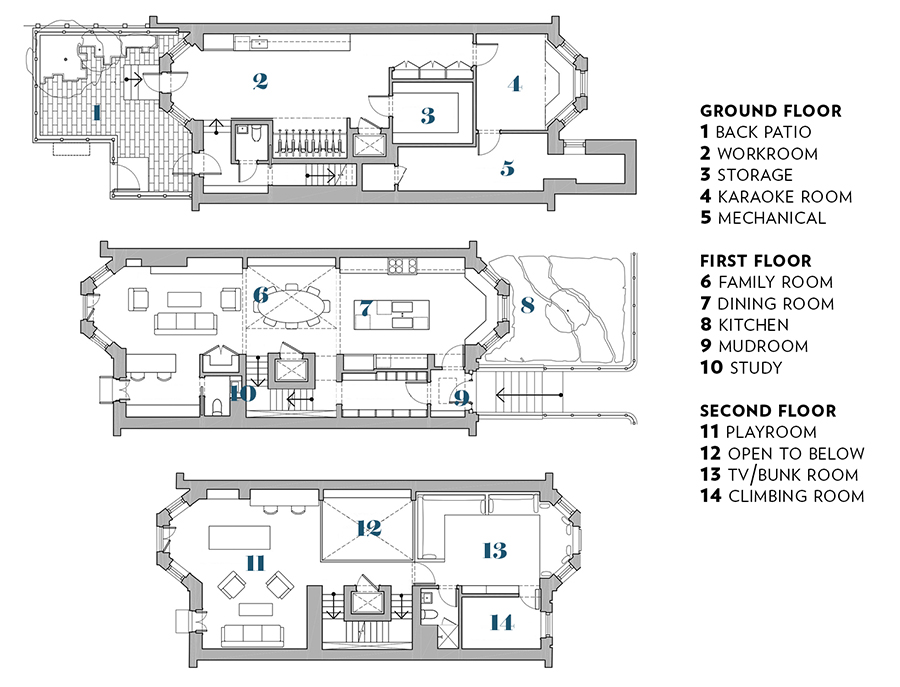
Plans for three of the home’s five floors.
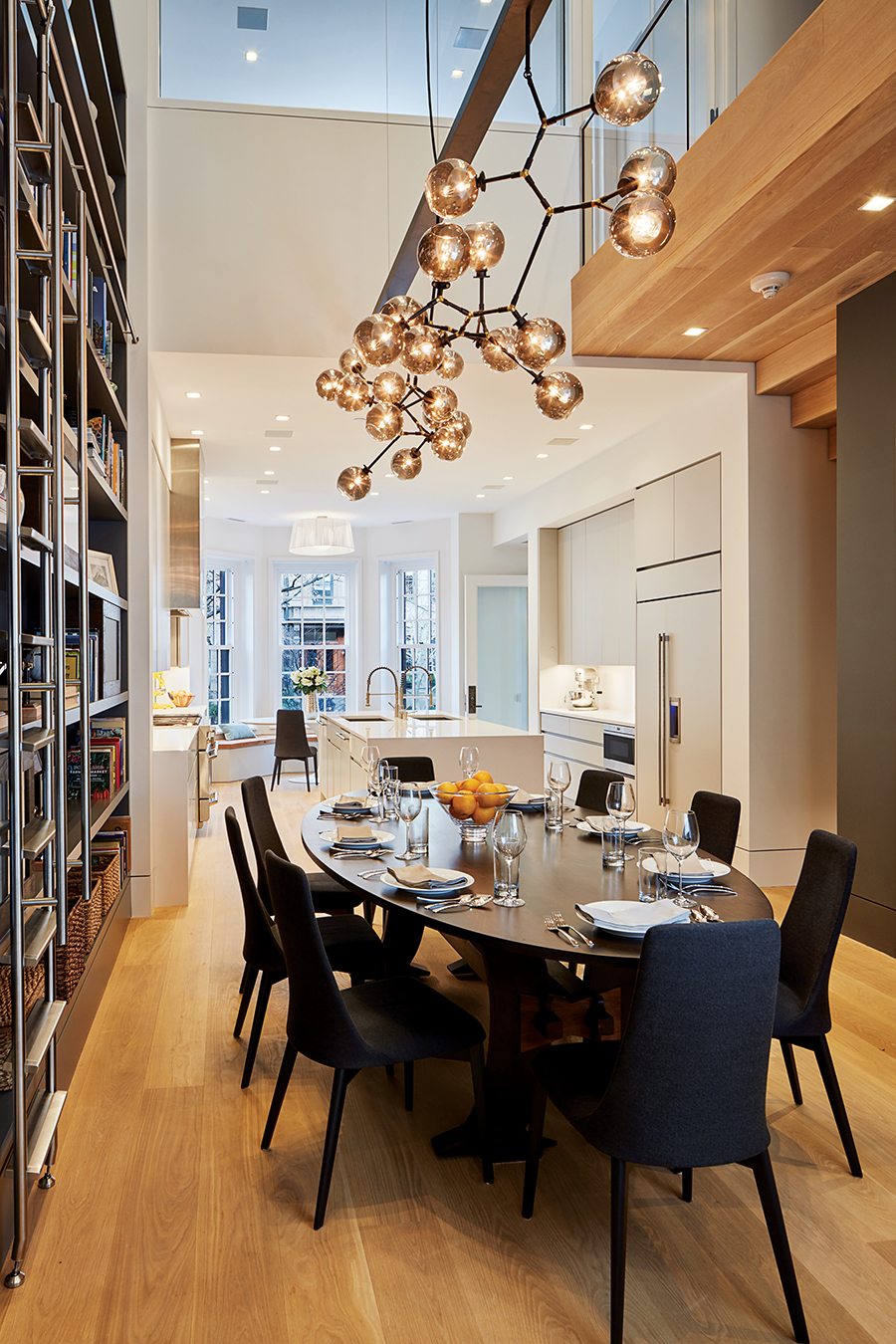
The dining table was made by one of the homeowners, who also assembled the light fixture from a do-it-yourself kit; the bookcase features a telescoping ladder. / Photograph by Jane Messinger
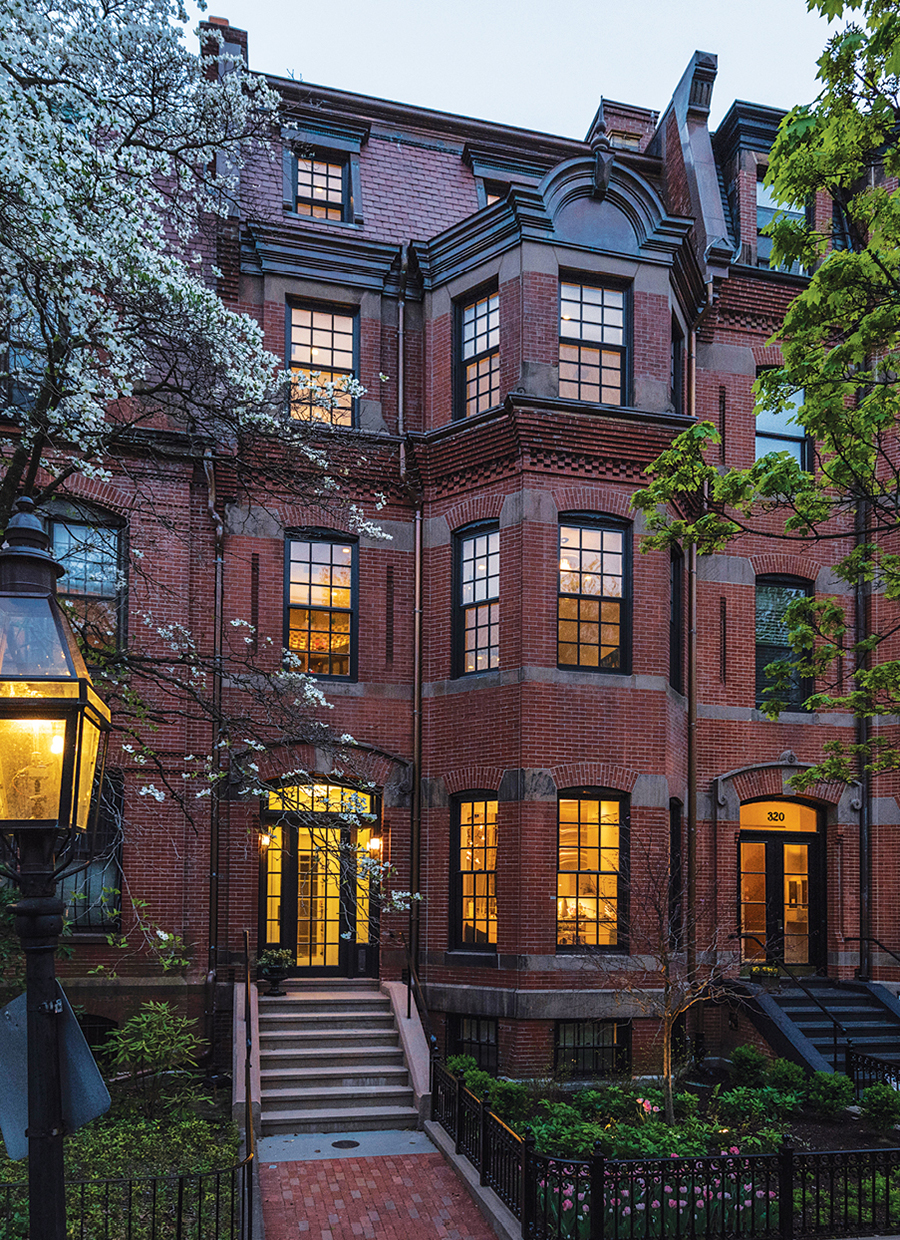
Workers restored the historical brick façade to match archival photos from the 1930s. / Photograph by Peter Vanderwarker
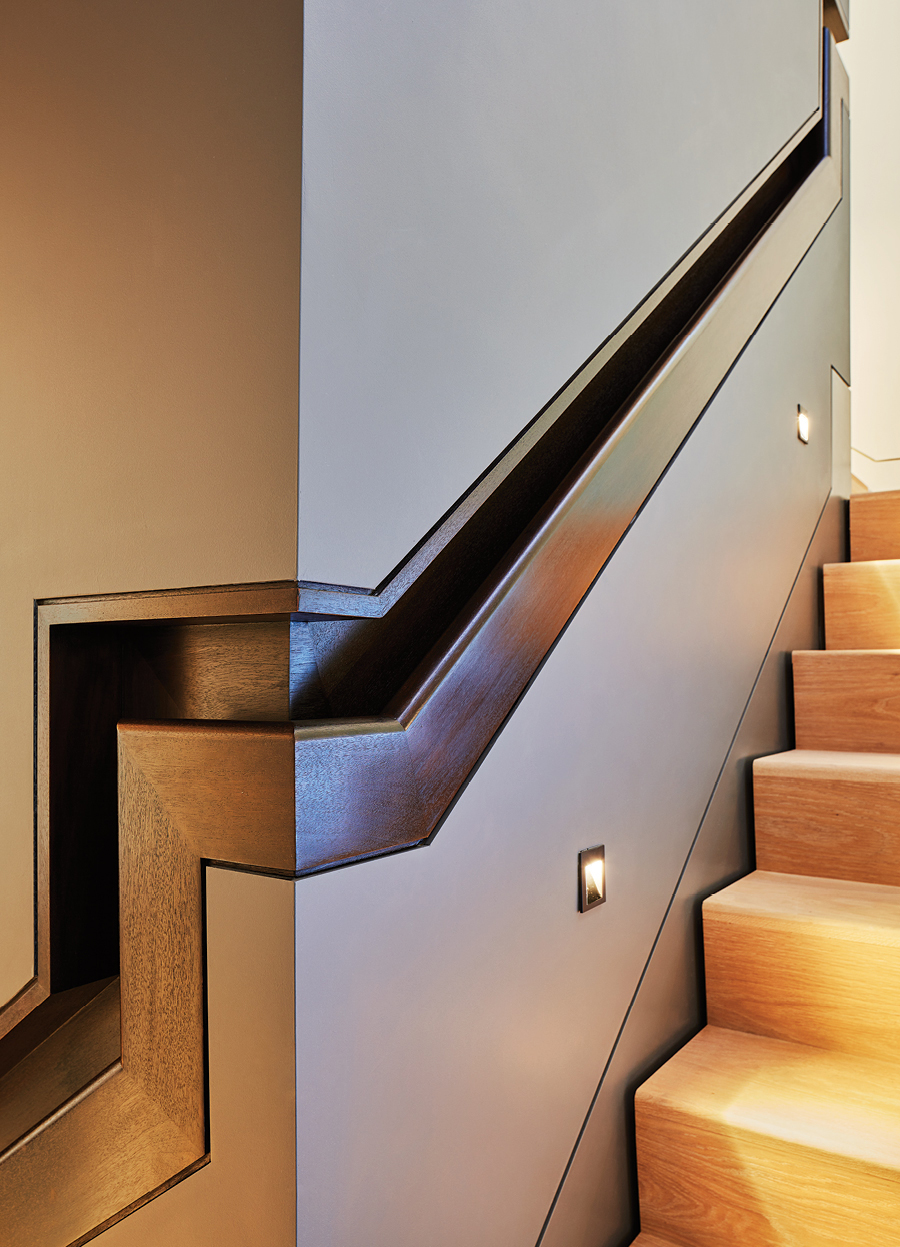
Recessed handrails further the minimalist aesthetic. / Photograph by Jane Messinger
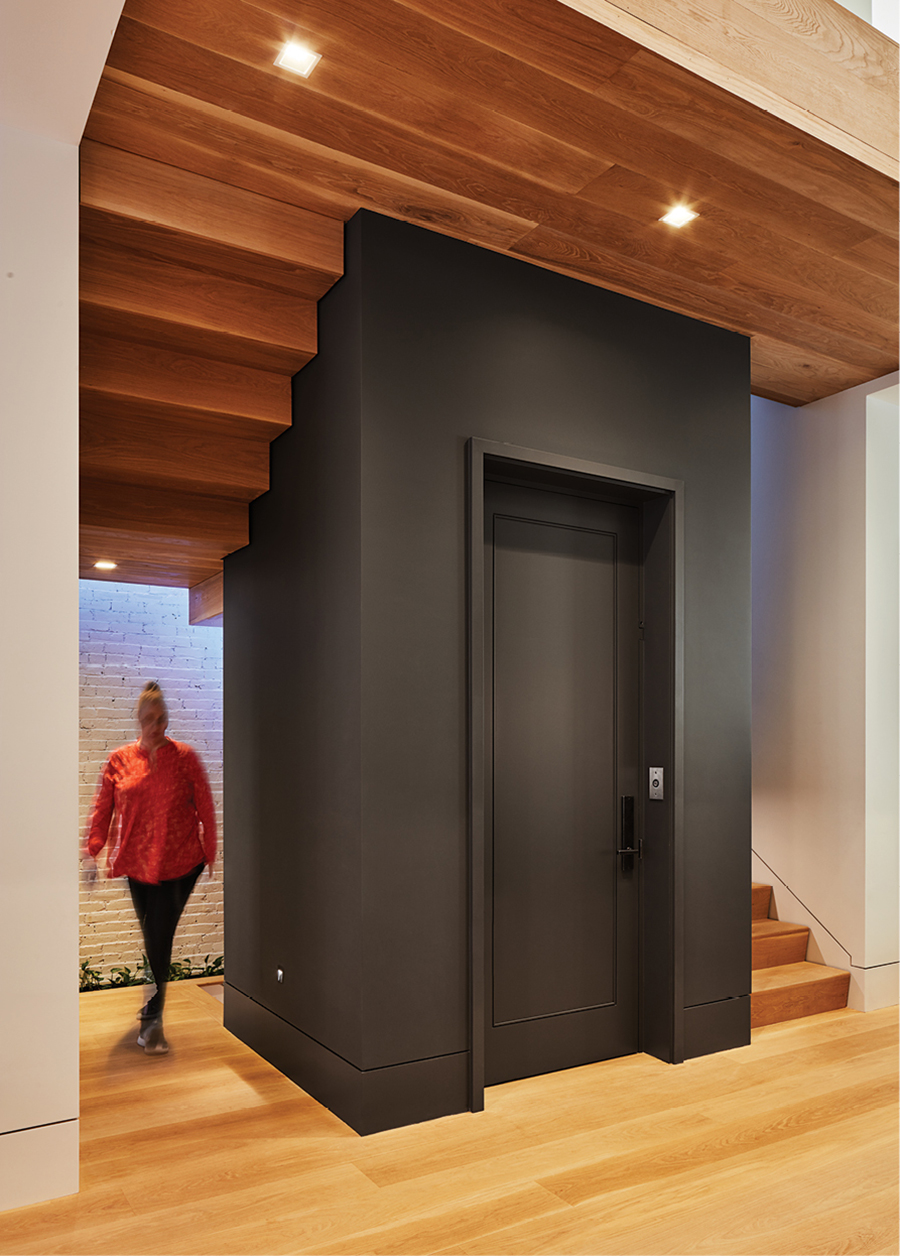
Oak flooring and stairs surround the elevator shaft. / Photograph by Jane Messinger
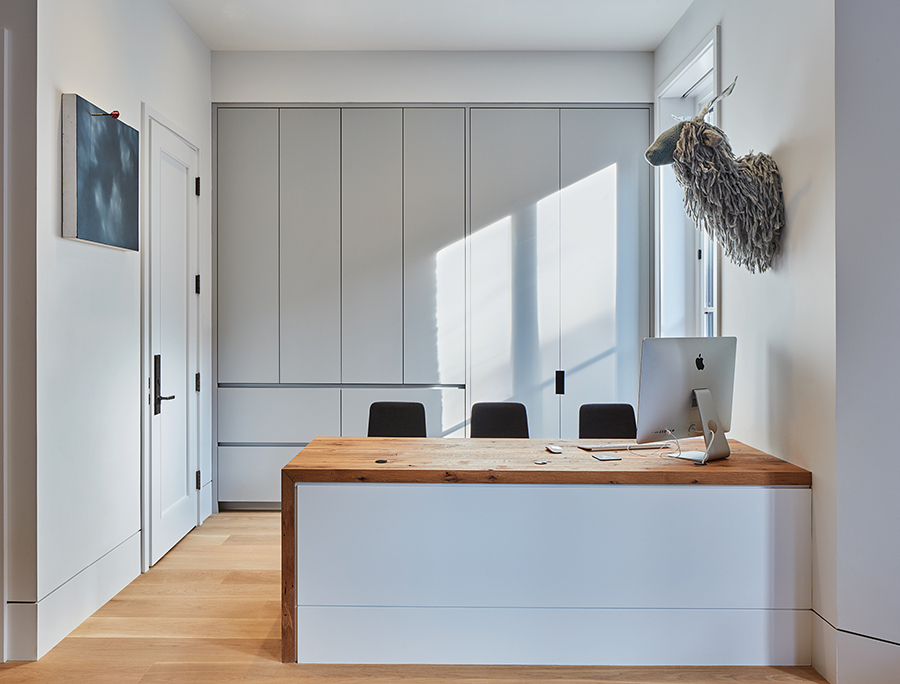
Truman designed shared workspaces, including this first-floor study area, to maximize family time. / Photograph by Jane Messinger

The second-floor TV room doubles as a “bunk room,” where a custom built-in sofa sports cushions the size of twin mattresses; the built-in drawers below hold bed linens. / Photograph by Jane Messinger
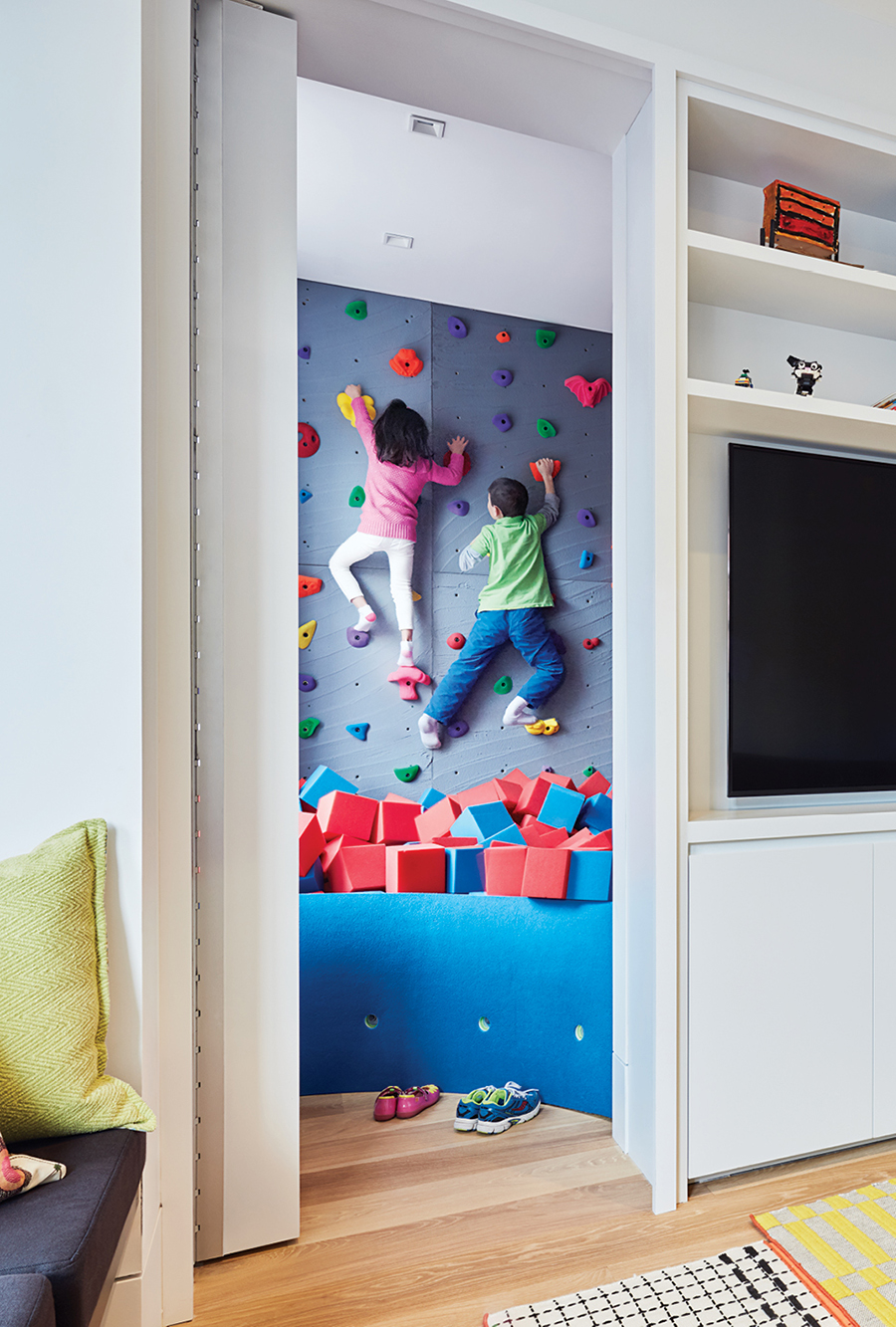
Tucked into a bookcase, a secret door leads to a climbing room on the second floor. / Photograph by Jane Messinger
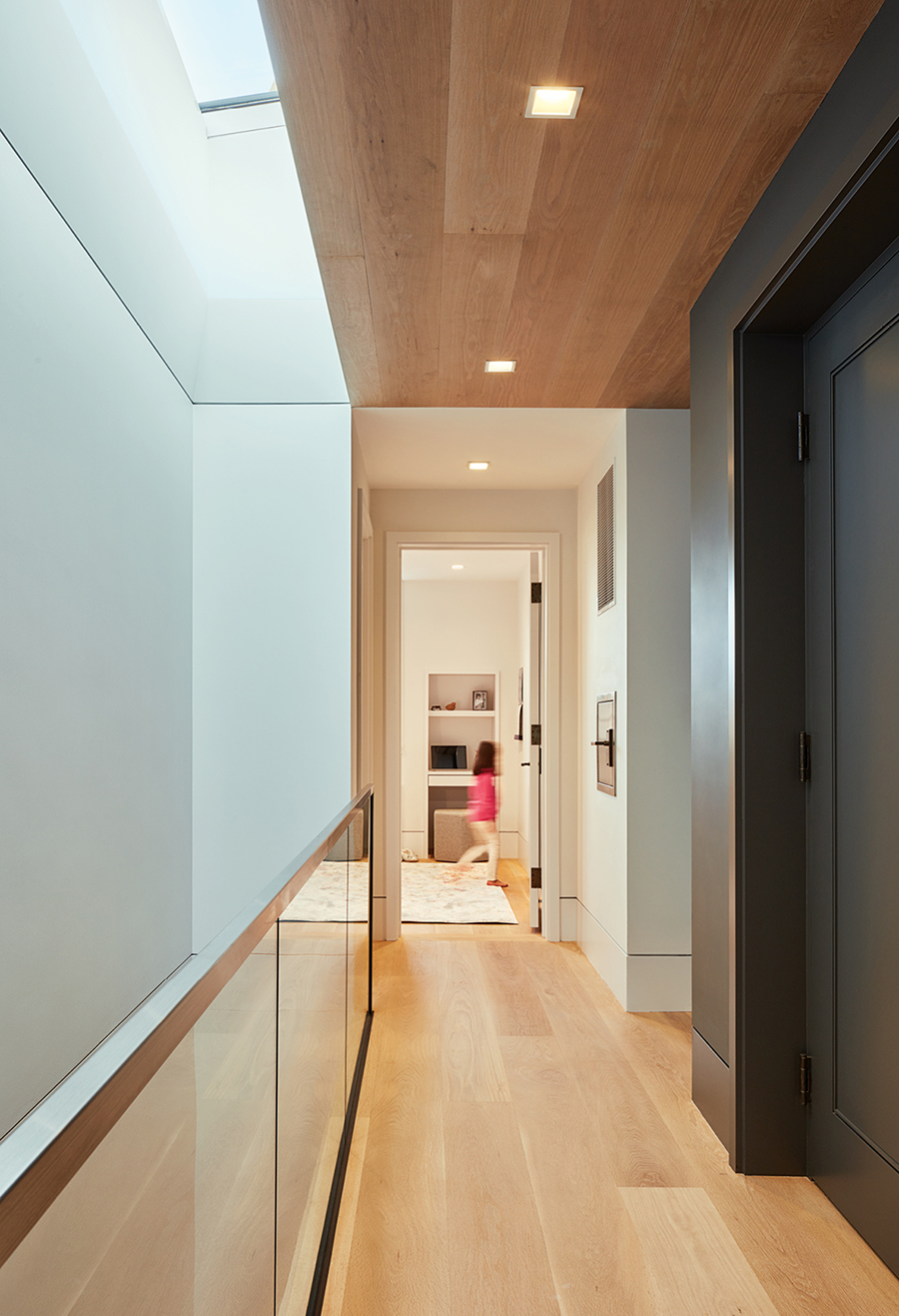
Glass handrails help filter light from above. / Photograph by Jane Messinger
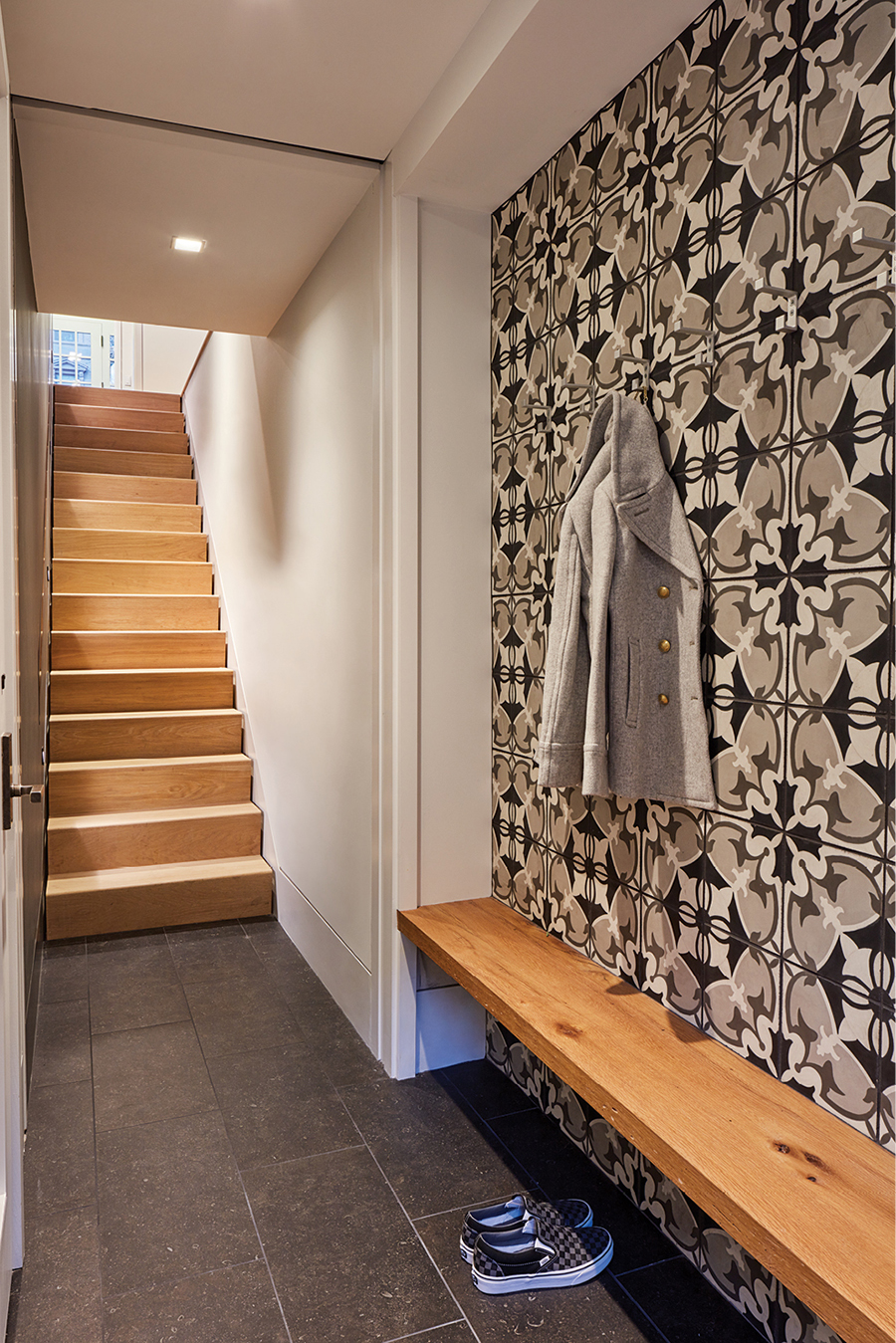
The basement-level mudroom includes concrete encaustic tile. / Photograph by Jane Messinger
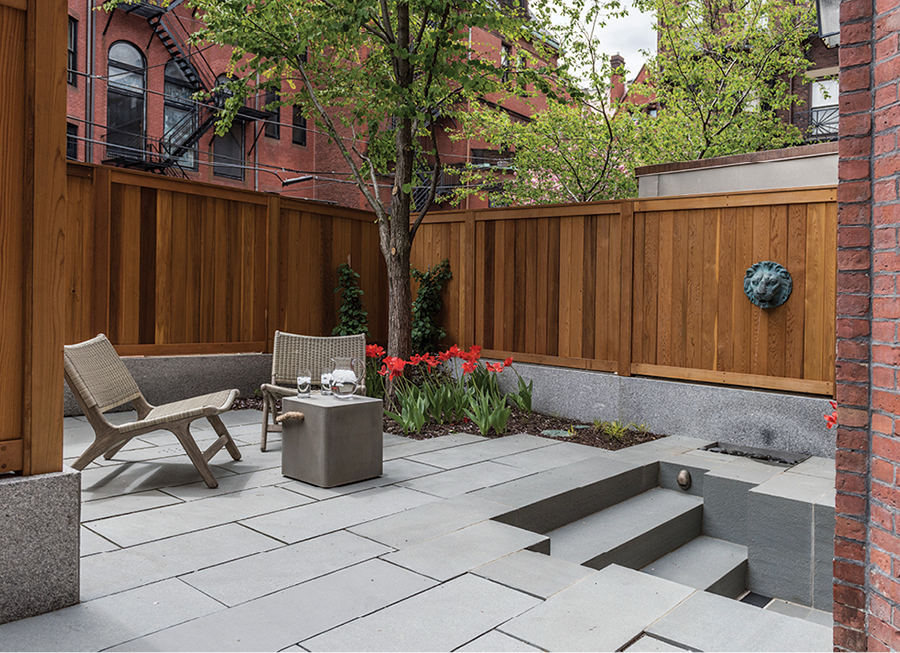
A cedar-slat fence encloses a bluestone terrace. / Photograph by Jane Messinger
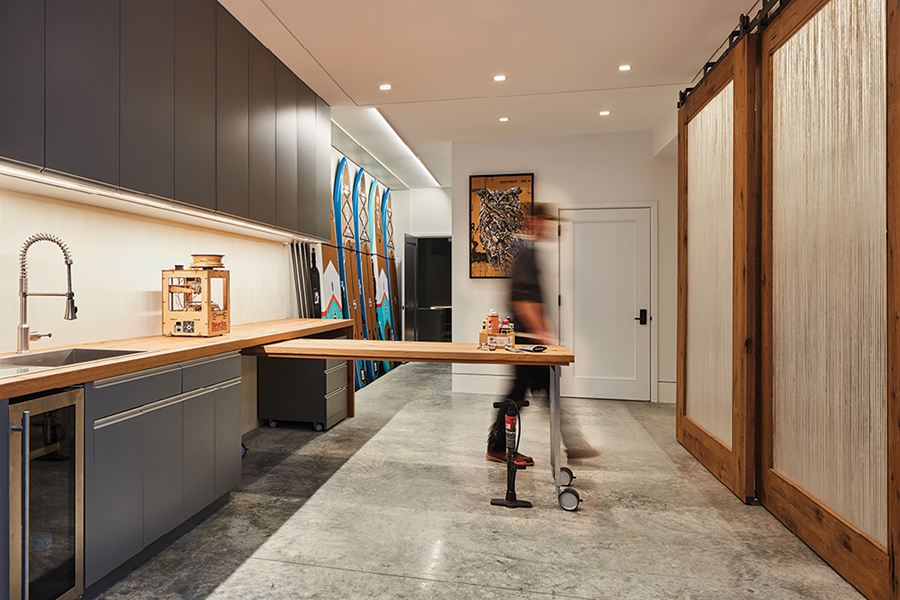
The basement workroom houses adjustable mobile work surfaces; the barn doors on the right conceal storage for 10 bikes. / Photograph by Jane Messinger

A copper-clad head house provides stair and elevator access to the roof deck, which includes a kitchen, a grill area, and built-in seating. / Photograph by Jane Messinger


